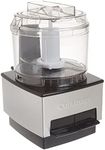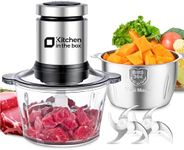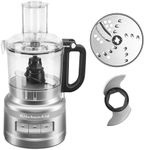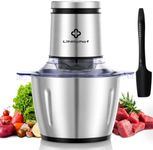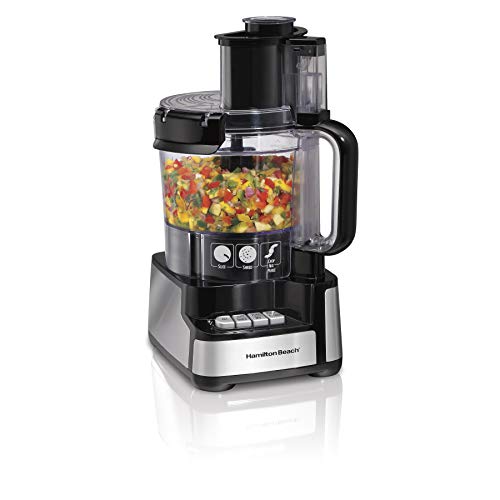Buying Guide for the Best Mini Food Processor
Choosing the right mini food processor can make your kitchen tasks much easier and more efficient. A mini food processor is a versatile tool that can help with chopping, slicing, dicing, and even pureeing. When selecting a mini food processor, it's important to consider several key specifications to ensure it meets your needs. Understanding these specs will help you make an informed decision and find the best fit for your cooking style and requirements.CapacityCapacity refers to the volume of food the processor can handle at one time, usually measured in cups. This is important because it determines how much food you can process in a single batch. Mini food processors typically range from 1 to 5 cups. If you usually prepare small quantities of food, a 1-2 cup capacity might be sufficient. For larger quantities or if you like to batch cook, consider a 3-5 cup capacity. Your cooking habits and the size of your household will guide you in choosing the right capacity.
PowerPower is measured in watts and indicates the strength of the motor. This is important because a more powerful motor can handle tougher ingredients and larger quantities more efficiently. Mini food processors usually range from 200 to 500 watts. For basic tasks like chopping herbs or making small batches of salsa, a lower wattage (200-300 watts) is adequate. If you plan to use the processor for more demanding tasks like grinding nuts or making dough, look for a higher wattage (400-500 watts). Consider what types of food you will be processing most often to determine the right power level for you.
Blades and AttachmentsBlades and attachments determine the versatility of the food processor. This is important because different blades and attachments can perform various tasks such as slicing, shredding, and pureeing. Some mini food processors come with multiple blades and discs, while others have a single multi-purpose blade. If you need a processor for a variety of tasks, look for one with multiple attachments. If your needs are simpler, a basic model with a single blade may suffice. Think about the types of food preparation you do most often to decide which blades and attachments are necessary for you.
Ease of CleaningEase of cleaning refers to how simple it is to clean the food processor after use. This is important because a processor that is difficult to clean can be a hassle and may discourage you from using it. Look for models with dishwasher-safe parts and minimal crevices where food can get stuck. Some processors have removable blades and bowls that make cleaning easier. If you value convenience and want to save time on cleanup, prioritize models that are known for being easy to clean. Consider how often you will use the processor and how much time you want to spend on maintenance.
Size and StorageSize and storage refer to the physical dimensions of the food processor and how easy it is to store. This is important because a bulky processor can take up valuable counter or cabinet space. Mini food processors are designed to be compact, but sizes can still vary. If you have limited kitchen space, look for a smaller, more compact model. Some processors also come with cord storage or stackable parts to save space. Think about where you will store the processor and how much space you have available to choose the right size for your kitchen.
Controls and SettingsControls and settings refer to the buttons and options available for operating the food processor. This is important because more settings can offer greater control over the processing results. Mini food processors typically have simple controls, such as pulse and continuous modes. Some may offer variable speed settings. If you prefer straightforward operation, a model with basic controls will be sufficient. If you want more precision and versatility, look for a processor with multiple speed settings and functions. Consider how much control you want over the processing and how comfortable you are with using different settings.

